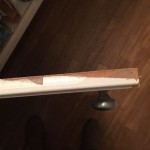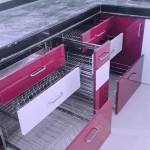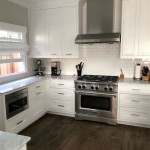How to Remove Scratches from Gloss Kitchen Cabinets
Glossy kitchen cabinets are a beautiful and popular choice for many homeowners. They offer a sleek and modern look that can instantly elevate the aesthetic of any kitchen. However, glossy surfaces are also prone to scratches, which can detract from their pristine appearance. Fortunately, there are several effective methods to remove scratches from gloss kitchen cabinets, restoring their shine and beauty.
1. Assess the Scratch Depth
Before embarking on any scratch removal method, it is crucial to assess the depth of the scratch. Superficial scratches, which only affect the top layer of the finish, are easier to address than deep scratches that reach the underlying wood. Evaluate the scratch's depth carefully, as this will dictate the appropriate repair approach.
2. Gentle Cleaning and Polishing
For minor scratches that do not penetrate the surface, a gentle cleaning and polishing approach can often be sufficient. Start by cleaning the affected area thoroughly with a mild soap and water solution. Avoid abrasive cleaners or sponges that can further damage the finish. After cleaning, apply a furniture polish or a specialized cabinet polish specifically designed for gloss surfaces. Rub the polish gently in a circular motion, using a soft cloth or microfiber pad. The polish will help to fill in minor scratches and restore the shine.
3. Using a Scratch Remover
For deeper scratches that require more intensive treatment, a specialized scratch remover can be a valuable tool. These products are available in various formulations, typically containing fine abrasives that help to smooth out the scratch. Apply the scratch remover according to the manufacturer's instructions, being careful to follow the recommended pressure and direction of application. After applying the scratch remover, polish the surface with a soft cloth to remove any residue and enhance the shine.
4. Repairing Deeper Scratches
If the scratch is deep and affects the underlying wood, more extensive repair work may be necessary. Depending on the depth and severity of the scratch, you may need to use a wood filler to fill in the damaged area. Choose a filler that matches the color of the cabinet and apply it carefully to the scratch, ensuring it is level with the surrounding surface. Once the filler has dried, sand the area smooth with fine-grit sandpaper to create a seamless finish. Finally, apply a layer of paint or varnish to match the existing finish, ensuring the repaired area blends seamlessly with the rest of the cabinet.
5. Refinishing for Severe Damage
If the scratch is severe and has significantly damaged the cabinet's finish, it may be necessary to refinish the entire cabinet. This process involves stripping the existing finish, sanding the surface, and applying a new layer of paint or varnish. Refinishing can be a time-consuming process, but it can restore the cabinet to its original condition. Consider hiring a professional if you lack experience in refinishing or if the cabinet is particularly intricate.
6. Preventative Measures
To prevent future scratches from occurring, it is essential to take preventative measures. Use protective pads under heavy objects that are placed on the cabinets, and avoid placing sharp objects or utensils directly on the cabinet's surface. By taking these precautions, you can help maintain the pristine appearance of your glossy kitchen cabinets and avoid the need for scratch removal in the future.

Scratched And Chipped Kitchen Cabinet Doors Refinishing Touch

How To Remove Scratches From Gloss Kitchen Cabinets Effective Techniques

How To Clean Gloss Kitchen Doors Blog Warehouse

How To Remove Scratches From Gloss Kitchen Cabinets Effective Techniques

How To Clean High Gloss Kitchen Units The Organizer

How To Remove Scratches From Gloss Kitchen Cabinets Effective Techniques

How To Clean Your Gloss Kitchen Cabinets Unica Concept

The Best Way To Clean A High Gloss Surface

How To Clean High Gloss Kitchen Units The Organizer

The Best Way To Clean A High Gloss Surface
Related Posts








